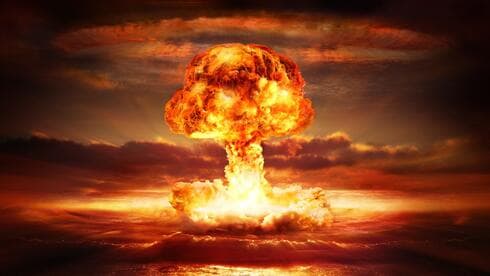More than 30 years have passed since the US conducted its last nuclear test, as part of the arms race with the Soviet Union. But now, in the shadow of competition with China, Trump has ordered his military to return to testing atomic bombs. The treaty that was supposed to end the atomic danger, the countries that violated it, and the"Israeli test" with South Africa
Reuters
|
On September 25, 1992, the United States conducted the"Divider" nuclear test at the Nevada test site, as part of Operation Jolene, a series of seven nuclear tests. It was the 1,032nd American nuclear test - and the last to date.
But yesterday (Thursday) the President of the United States ordered
Donald Trump
For the US Army
Immediately begin nuclear weapons testing
, after a 33-year hiatus, and minutes before the start of his meeting with the Chinese leader
Xi Jinping
How many nuclear tests have been conducted to date, why were they stopped - and why does anyone even want to resume them? A comprehensive article by the Reuters news agency sets the record straight.
4 Viewing the gallery
Nuclear mushroom, illustration (Photo: shuttertsock)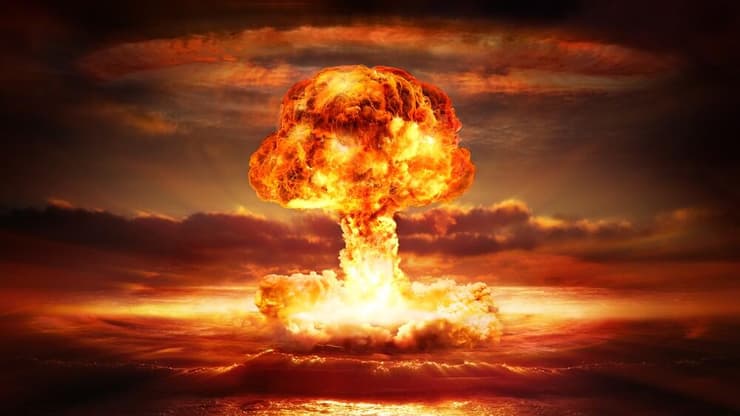
The nuclear age
The United States ushered in the nuclear age with a 20-kiloton atomic bomb test at Alamogordo, New Mexico, in July 1945. The following month, it dropped the first two atomic bombs—and the last to date used—on
Hiroshima and Nagasaki
, which led to the surrender of Japan and the end of
World War II
.
The Soviet Union stunned the West with its first nuclear test just four years later, in 1949, at the Semipalatinsk test site in Kazakhstan, which has since become the Soviet Union's main nuclear test site. In the five decades between then and the publication in 1996 of the CTBT, the treaty banning nuclear tests, more than 2,000 such tests were conducted - 1,032 by the United States and 715 by the Soviet Union. France conducted 210 tests, while Britain and China each conducted 45.
Since the treaty entered into force, only ten nuclear tests have been conducted - India conducted two in 1998, its rival Pakistan conducted the same number in the same year, and since that year North Korea has been the only country to conduct nuclear tests - in 2006, 2009, 2013, 2016 (twice) and 2017.
The last American nuclear test was in 1992, China and France in 1996, and the Soviet Union in 1990 - just before its fall. Russia, which inherited the vast majority of the Soviet nuclear arsenal, has not conducted a single nuclear test.
Putin and the image that Russia previously released of the "Poseidon" torpedo (Photo: Sergei Bobylev, Sputnik, Kremlin Pool Photo/ AP, Photo: Russian Defense Ministry/Handout via REUTERS)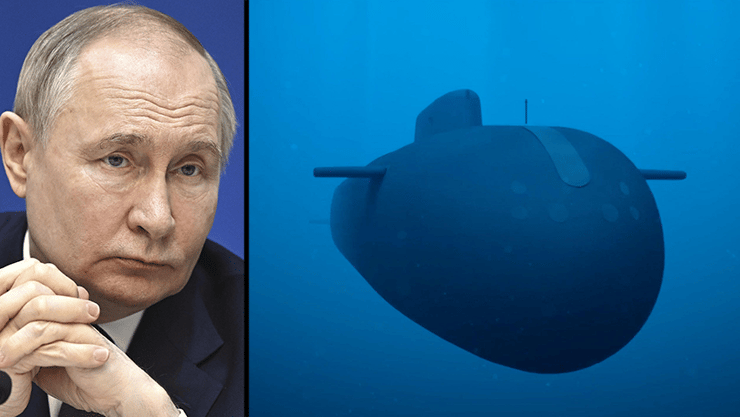
Russia conducted nuclear exercises last week and tested
Nuclear cruise missile and nuclear torpedo
"Unintercepted" Poseidon-class, but it did not conduct a nuclear warhead test.
Why were the experiments stopped?
Concerns were raised about the impact of the experiments - above ground, underground and deep sea - on health and the environment. The impact of the experiments conducted by Western countries in the Pacific Ocean and those carried out by the Soviets in Kazakhstan and the Arctic Ocean was significant, both in terms of environmental and human aspects. The lands of millions were contaminated by the experiments, and they had to deal with health problems for decades.
Supporters of limiting testing said that this would reduce tensions between Moscow and Washington.
The treaty completely bans testing. Russia signed it in 1996 and ratified it four years later. The United States also signed it in 1996, but did not ratify it.
In 2023, the President of Russia
Vladimir Putin
Officially revoked the ratification of the treaty, which led to a conflict with the United States.
Why renew the experiments?
To gather information - and send a message. Tests provide evidence of what nuclear weapons might look like - and whether older versions still work.
China - the third largest nuclear power. President Xi alongside Putin and Jim Jong Un (Photo: Jade Gao / AFP)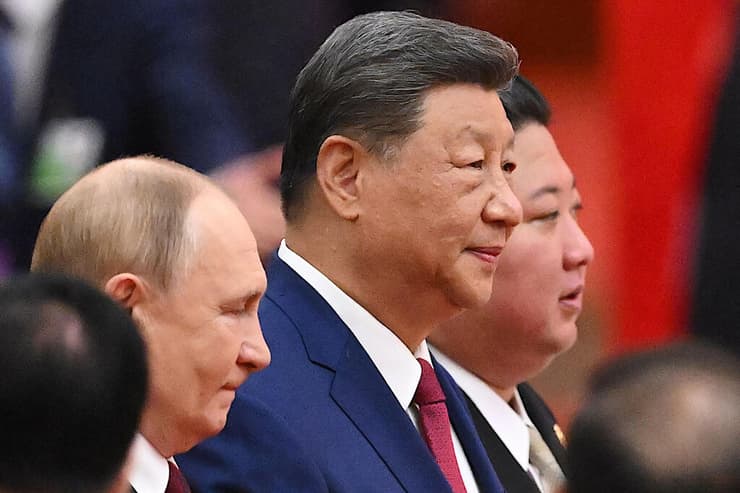
In 2020, The Washington Post reported that the US administration was debating whether to conduct a nuclear test. Apart from gathering technical data, such a test would be seen by Russia and China as a deliberate declaration of US strategic power.
Putin has repeatedly warned that if the United States resumes nuclear testing, his country will do the same, saying that a global nuclear arms race is already underway.
The number of warheads each nuclear state has is considered a secret, but according to the Association of American Scientists, Russia has 5,459 warheads, compared to 5,177 for the United States. These numbers include deployed warheads, those in storage - and those that have actually been decommissioned.
The number of nuclear warheads in the world peaked at more than 70,000 in 1986, the vast majority in the United States and the Soviet Union. But that number has gradually declined to about 12,000, with the majority still in the hands of the Americans and the Russians.
According to the same American organization, China is the third largest nuclear power, with 600 warheads. France has 290, Britain 225, India 180, Pakistan 170, Israel 90 and North Korea 50. Russia, the Soviet Union and China are all working to upgrade and modernize their nuclear arsenals.
And what about Israel?
According to foreign reports, Israel also possesses nuclear weapons, developed in a reactor in Dimona, estimated to contain about 90 nuclear warheads. The American news agency AP even reported about two months ago, in a report approved by the censor, that Israel
Constructing a new large building at the reactor complex in Dimona
According to experts, this is a new heavy water reactor - or a facility for assembling nuclear weapons - in its initial stages.
Allegations of an American cover-up. President Carter (back) next to Begin and Sadat, 1978 (Photo: AP)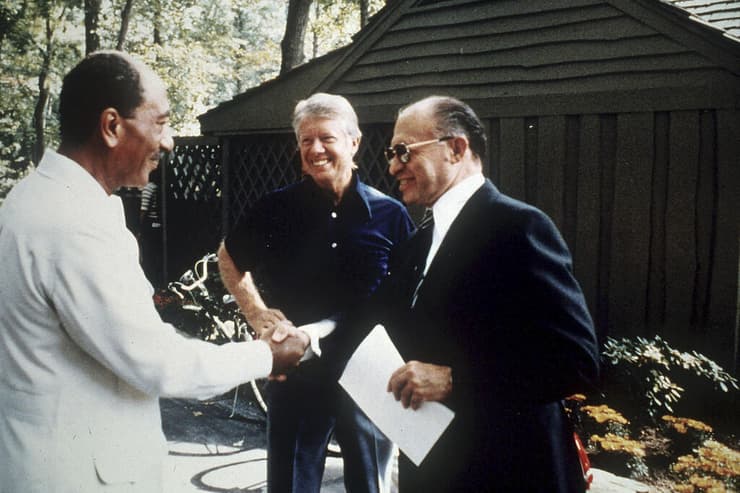
In 1979, an unusual nuclear incident occurred that shocked the world -
The Wella Incident
- which is believed to have been an Israeli nuclear test conducted in collaboration with South Africa - whose apartheid government also sought to obtain nuclear weapons.
On September 22, shortly before sunrise, an American satellite called Vela6911 recorded a double flash while orbiting the South Atlantic Ocean. At Patrick Air Force Base in Florida, where it was still nighttime, the team responsible for detecting the flash knew it was a nuclear explosion, something that American satellites had recorded dozens of times before. The then US President
Jimmy Carter
He hurriedly convened a meeting in the White House Situation Room the next day, and wrote in his diary:"There was an indication of a nuclear test in the South African region - either South Africa, or Israel using a ship at sea, or nothing."
In 2019, 40 years after the incident, the American magazine"Foreign Policy" conducted a comprehensive investigation into the incident, which came to one conclusion: only Israel would have been capable of carrying out that nuclear test. For the investigation, the magazine convened a team of scientists, academics, former government officials, and experts in the field of nuclear weapons prevention, to analyze documents and data that had become unclassified. Their conclusion was that the Carter administration, which was then trying to be re-elected as President of the United States and working to sign a peace treaty between Israel and Egypt, tried to cover up what is now clear to be a nuclear test.
For example, a team of experts appointed by the then president's scientific advisor published its final report in May 1980, after only three meetings:"In our assessment, this was probably not a nuclear test." The committee members, the article said, rejected all evidence that indicated otherwise, including an analysis by the Naval Research Laboratory that identified the site of the explosion near the Prince Edward Islands, 1,600 kilometers off the southern coast of South Africa, using hydroacoustic data (underwater sounds) and claims of the detection of radioactive materials in sheep in Australia.

